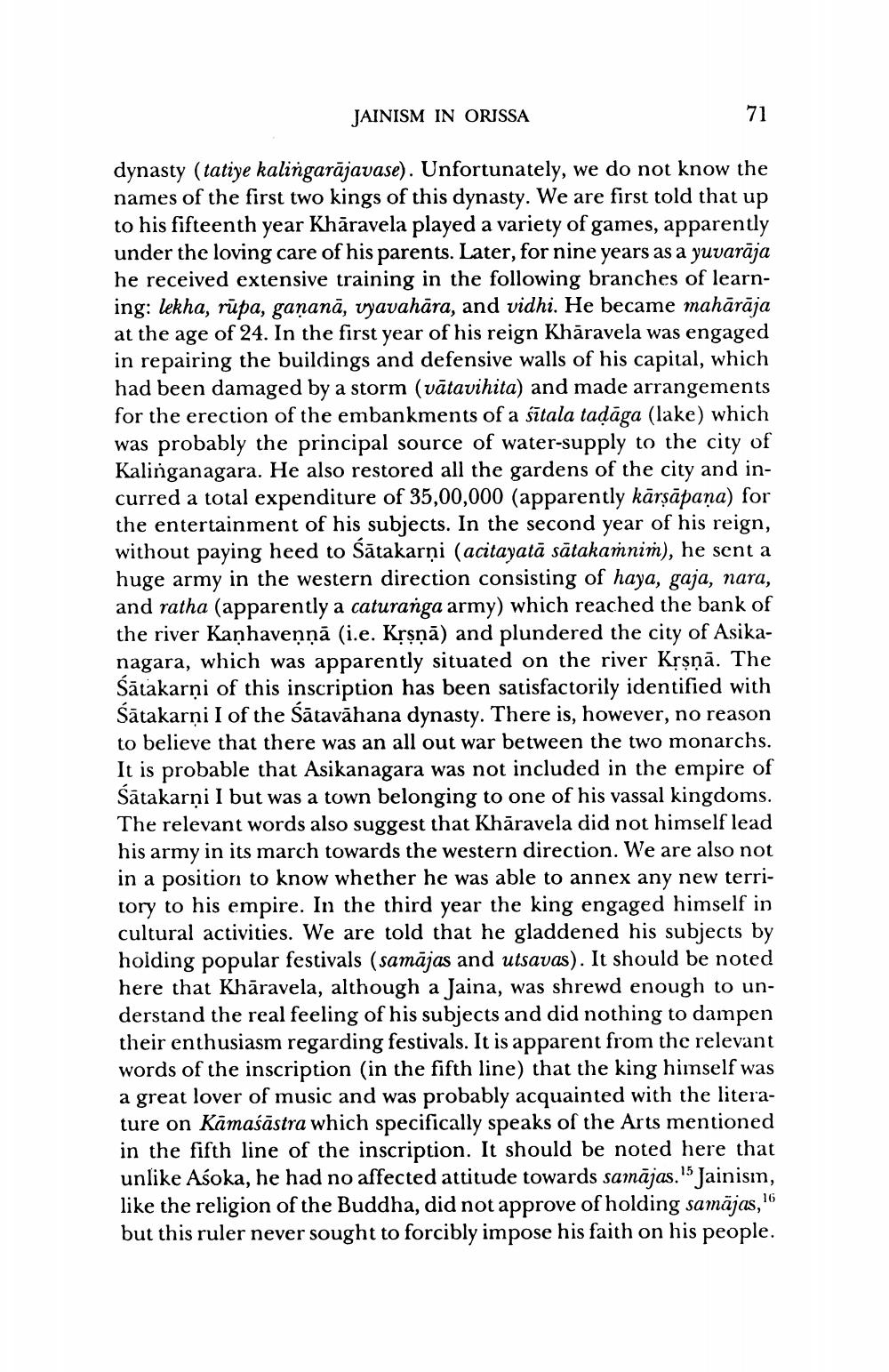________________
JAINISM IN ORISSA
71
dynasty (tatiye kalingarājavase). Unfortunately, we do not know the names of the first two kings of this dynasty. We are first told that up to his fifteenth year Khāravela played a variety of games, apparently under the loving care of his parents. Later, for nine years as a yuvarāja he received extensive training in the following branches of learning: lekha, rūpa, gananā, vyavahāra, and vidhi. He became mahārāja at the age of 24. In the first year of his reign Khāravela was engaged in repairing the buildings and defensive walls of his capital, which had been damaged by a storm (vātavihita) and made arrangements for the erection of the embankments of a sūtala tadāga (lake) which was probably the principal source of water-supply to the city of Kalinganagara. He also restored all the gardens of the city and incurred a total expenditure of 35,00,000 (apparently kārşāpaņa) for the entertainment of his subjects. In the second year of his reign, without paying heed to śātakarņi (acitayatā sātakamnim), he sent a huge army in the western direction consisting of haya, gaja, nara, and ratha (apparently a caturanga army) which reached the bank of the river Kanhaveņņā (i.e. Krşņā) and plundered the city of Asikanagara, which was apparently situated on the river Krşņā. The Śātakarni of this inscription has been satisfactorily identified with Sātakarni I of the Sātavāhana dynasty. There is, however, no reason to believe that there was an all out war between the two monarchs. It is probable that Asikanagara was not included in the empire of Sätakarņi I but was a town belonging to one of his vassal kingdoms. The relevant words also suggest that Khāravela did not himself lead his army in its march towards the western direction. We are also not in a position to know whether he was able to annex any new territory to his empire. In the third year the king engaged himself in cultural activities. We are told that he gladdened his subjects by holding popular festivals (samājas and utsavas). It should be noted here that Khāravela, although a Jaina, was shrewd enough to understand the real feeling of his subjects and did nothing to dampen their enthusiasm regarding festivals. It is apparent from the relevant words of the inscription (in the fifth line) that the king himself was a great lover of music and was probably acquainted with the literature on Kāmaśāstra which specifically speaks of the Arts mentioned in the fifth line of the inscription. It should be noted here that unlike Asoka, he had no affected attitude towards samājas. 15 Jainism, like the religion of the Buddha, did not approve of holding samājas, but this ruler never sought to forcibly impose his faith on his people.




